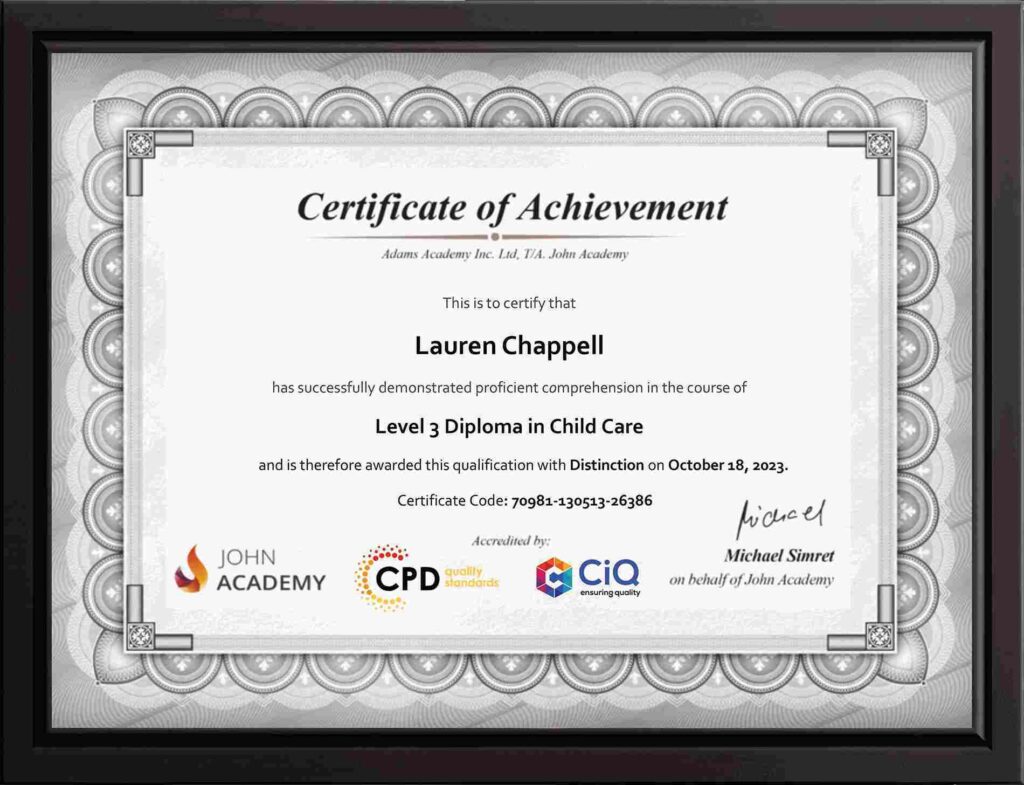
A business’s online presence is critical for its success. About 76% of customers admitted to checking a business out on the internet before visiting them physically or taking any further action.
If you’re still on the fence about putting efforts to promote your business online, you’re losing on ample opportunities. You’re missing out on all the exciting encounters with your prospects and the thrill of converting them into paying customers.
More importantly, you’re missing out on everything the future of digital and technology offers.
Today, we’ll uncover six fool-proof strategies to skyrocket your online visibility and take your business to new heights.
1. Create micro-influencer campaigns
A micro-influencer campaign involves collaborating with individuals with a smaller but highly engaged and dedicated following on social media. Unlike traditional influencers with millions of followers, micro-influencers typically have a few thousand to tens of thousands of followers. Since they have a more specific niche or focus and a strong connection with their audience, they generate up to 60% more engagement than macro-influencers.
Here’s how a micro-influencer campaign works:
1. Identify micro-influencers who align with your brand and target audience. Look for influencers who have a genuine interest in your industry, products, or services.
2. Reach out to the selected micro-influencers, engage with their content, comment on their posts, and share their content.
3. Determine the type of content you want the influencers to create, the messaging you want to convey, and the campaign timeline.
4. Negotiate a fair compensation package, including monetary payment, free products, or other incentives.
5. Keep track of the campaign’s performance through social media analytics and other tracking tools.
Approaching micro-influencers can be just as much effective for B2B companies, as they’re for B2C companies. Find someone as passionate and knowledgable as you are in your industry. Their recommendations and endorsements can positively impact the perception of your B2B brand.
2. Prioritize SEO
SEO is an important aspect of a B2B marketing strategy as it helps you improve your online visibility, attract relevant traffic, and generate qualified leads.
SEO allows you to target specific keywords and phrases relevant to your B2B offerings. This means that the traffic you attract through search engines is more likely to consist of potential leads actively seeking products or services similar to what you offer.
After all, users tend to trust websites that appear at the top of search results, leading to a higher likelihood of generating leads and conversions.
Here are some key strategies to consider when implementing SEO for B2B:
1. Conduct thorough market research and keyword research to identify relevant and high-value keywords that potential B2B customers are using to search for products or services.
2. Optimize your website’s meta titles, meta descriptions, and header tags with targeted keywords.
3. Ensure your content is informative, valuable, and optimized for search engines. Create individual pages for each product or service you offer to improve relevance.
4. Build a strong backlink profile by acquiring high-quality links from industry-relevant websites, industry directories, and authoritative publications.
5. Ensure your website is mobile-friendly and responsive, as an increasing number of B2B professionals use mobile devices for research and browsing.
6. Optimize your website’s technical aspects, including site speed and XML sitemaps. Fix any broken links and ensure proper URL structures.
For best results, you can opt for B2B SEO services and hire a B2B SEO agency that handles SEO for you. Consider an agency that offers on-page, link-building, and technical SEO services so you can only focus on growing your business.
3. Participate in online challenges and trends
While online challenges and trends are often associated with B2C (Business-to-Consumer) marketing, there are creative ways for B2B agencies to leverage them as well.
Here’s how:
1. Keep an eye on popular online challenges and trends—these could be hashtag challenges, social media trends, or industry-specific challenges.
2. Join discussions, webinars, or video challenges where you share insights, industry trends, and solutions related to your services.
3. Humanize your B2B agency by showcasing the people behind the scenes, their expertise, and their passion for the industry.
4. Engage with other participants, industry professionals, and potential clients who are taking part in the challenge. Participate in conversations, comment on relevant posts, and show 5. support for valuable contributions.
5. Focus on adding value, sharing knowledge, and building connections rather than solely promoting your services.
6. Encourage your audience and clients to participate in relevant challenges related to your B2B agency.
Mainly, put your brand out there for everyone in your industry to notice and engage with. It’ll help you gain organic traffic in no time.
4. Leverage user-generated content
User-generated content (UGC) is a powerful marketing strategy that involves using content created by your customers, fans, or followers to promote your brand. UGC campaigns result in 29% higher web conversions than regular campaigns.
Here’s how to implement them:
1. Actively encourage your customers to create and share content related to your brand, products, or services. This can be done through social media posts, contests, or simply by asking for feedback and testimonials.
2. Develop unique branded hashtags that users can include in their content when posting about your brand. This helps you track and collect UGC more effectively.
3. Feature user-generated content on your website, such as customer reviews, testimonials, and photos of customers using your products. This adds social proof and authenticity to your brand.
4. Partner with influencers who have a significant following and encourage them to create UGC featuring your brand. Their endorsement can amplify the reach of your content.
5. Keep an eye on the UGC being created and shared about your brand. Ensure that it aligns with your brand guidelines and values. Moderate inappropriate content, if necessary, to maintain a positive brand image.
6. Acknowledge and reward users whose content is particularly outstanding or impactful. This recognition can foster loyalty and encourage further content creation.
Remember, if leveraged right, your customers can become your biggest advocates.
5. Guest blogging
Guest blogging is a content marketing strategy where you, as a guest author, write and contribute articles or blog posts to other websites. These websites could be within your industry or niche with an audience that is either your target customer or people who could advocate for you.
These guest posts are usually relevant to the host website’s audience and provide valuable insights, information, or expertise. The host website benefits from fresh and diverse content. At the same time, as a guest author, you gain exposure to a new audience and the opportunity to build authority and credibility in your field.
Moreover, a well-written guest post with a link back to your website or blog can drive referral traffic from the host site to your own. If readers find value in your guest post, they are more likely to visit your site to explore more of your content.
Here’s how guest blogging works:
1. Identify websites or blogs that align with your niche, industry, or target audience. Also, look for websites that accept guest contributions and have an engaged readership.
Research the host website to understand their content style, audience preferences, and the topics they cover.
2. Reach out to the website owner or editor with a pitch. The pitch usually includes proposed topics or article ideas, a brief introduction of the guest blogger, and a summary of your expertise or credentials.
3. Once your pitch is approved and you’ve both agreed on a topic, start working on the content while adhering to the host website’s content guidelines.
4. Once you’ve submitted the blog, wait for the editor to evaluate it for quality, relevance, and adherence to the website’s guidelines.
5. If you get published, the host website will typically include an author bio section at the end of the guest post. You can provide information about yourself and include a link back to your own website or blog.
Once your blog is published, do not shy away from promoting the guest post through different channels, such as social media, newsletters, and email lists. This helps maximize the post’s reach and visibility.
6. Leverage guerrilla marketing
A guerrilla marketing strategy involves unconventional and low-cost tactics to promote a brand, product, or service in an attention-grabbing and memorable way. It aims at creating a significant impact with a limited budget by using creativity, surprise, and innovation.
Here’s how to leverage it:
1. Create engaging and creative content that resonates with your B2B audience.
Attend trade shows, conferences, and industry events to engage with potential clients and industry peers. Stand out from the competition by hosting eye-catching displays, interactive booths, or live demonstrations.
2. Use branded stickers and posters in high-traffic areas or near industry-relevant locations. This can create curiosity and brand awareness among your target audience.
3. Surprise potential clients with personalized gifts or samples of your products or services.
Host informative workshops, webinars, or training sessions related to your industry. This establishes your B2B company as an authority and can attract potential clients seeking expertise.
4. Organize attention-grabbing and relevant PR stunts that generate media coverage and social media buzz. The stunt should align with your B2B company’s brand and values.
If you offer physical products, use creative and eye-catching packaging that stands out on shelves or in mailboxes. Unboxing experiences can be shared on social media, increasing brand exposure.
5. Collaborate with other B2B companies in non-competing industries to run joint marketing campaigns. Pooling resources can extend reach and provide mutual benefits.
Guerrilla marketing often relies on grassroots efforts, viral potential, and word-of-mouth to reach its target audience. Make sure you have ample resources to support these campaigns.
Level up your marketing to attract more traction
B2B marketing is all about communicating the value and benefits of products or services in a personalized and intriguing way. By expanding your online presence, you not only get more traction on your website and social profiles but also engage and nurture your customers in different ways.
So, put more effort into promoting your business online, use multiple platforms to showcase your brand’s vision, and experiment with different strategies to find what’s best for you.
More importantly, keep an eye on the trends in B2B marketing and pivot based on the results and metrics. Just follow the best practices, and you’ll soon be able to attract higher-quality leads for your business.




